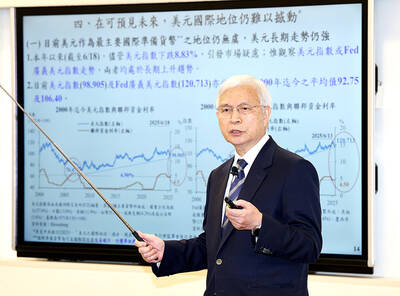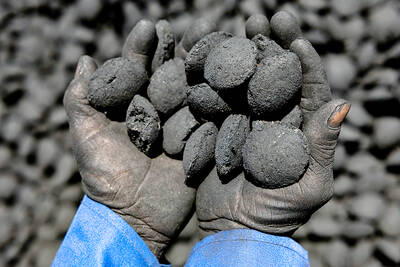Applied Materials Inc, the world's largest maker of equipment used to produce computer chips, said it developed a technology that will let customers such as Advanced Micro Devices Inc make smaller and faster semiconductors.
Applied said Advanced Micro, the second-largest maker of processors after Intel Corp, as well as Taiwan Semiconductor Manufacturing Co (
Chipmakers are trying to make their products smaller, cheaper to produce and faster while boosting capacity, to improve the performance of electronic devices and to stimulate demand. To do so they must cram more capacitors onto smaller bits of silicon.
"It's an incredibly difficult problem and no one has come up with the optimal solution at this point. This is one of the big, big technical problems," said Mark FitzGerald, an analyst at Banc of America Securities. "Investors should be paying attention to this."
The race is on between companies such as Applied, based in Santa Clara, California, and Novellus Systems Inc to produce so-called low-k films that make sure that tightly packed capacitors don't interfere with each other. Circuit widths on the latest chips are down to 90 nanometers. One nanometer is a billionth of a meter.
"This is an inflection point not only for the company but for the industry. It's no longer a laboratory curiosity," said Mike Splinter, Applied's chief executive officer. "This is a clear break away from the competition."
About US$268 million of low-k chipmaking equipment will be sold this year, with the market rising to US$906 million by 2008, according to chip industry market forecaster VLSI Research Inc.
"There is a lot at stake in terms of chip performance here," said Risto Puhakka, an analyst at VLSI. "If it doesn't work then a lot of chipmakers aren't going to be able to meet their specifications."
A major problem with the introduction of the new material is that it is "mechanically weak" meaning that it requires expensive packaging to stop chips from cracking and failing, according to Wilbert Van Den Hoek, the chief technical officer of Applied's rival Novellus.
Van Den Hoek said Novellus has an advantage because it has produced a more robust material that will allow the technology to be applied to less expensive chips, which require cheaper packages, thereby opening the technology to wider markets.
Novellus has sold equipment to TSMC rivals United Microelectronics Corp (
TSMC said it is producing the latest laptop graphics chip for ATI Technologies Inc, the world's second-largest maker of graphics cards for personal computers, using the low-k material equipment from Applied.
TSMC said it has produced about 10,000 wafers using the new technology, equal to about 1 percent of its total output in the first quarter.

DIVIDED VIEWS: Although the Fed agreed on holding rates steady, some officials see no rate cuts for this year, while 10 policymakers foresee two or more cuts There are a lot of unknowns about the outlook for the economy and interest rates, but US Federal Reserve Chair Jerome Powell signaled at least one thing seems certain: Higher prices are coming. Fed policymakers voted unanimously to hold interest rates steady at a range of 4.25 percent to 4.50 percent for a fourth straight meeting on Wednesday, as they await clarity on whether tariffs would leave a one-time or more lasting mark on inflation. Powell said it is still unclear how much of the bill would fall on the shoulders of consumers, but he expects to learn more about tariffs

NOT JUSTIFIED: The bank’s governor said there would only be a rate cut if inflation falls below 1.5% and economic conditions deteriorate, which have not been detected The central bank yesterday kept its key interest rates unchanged for a fifth consecutive quarter, aligning with market expectations, while slightly lowering its inflation outlook amid signs of cooling price pressures. The move came after the US Federal Reserve held rates steady overnight, despite pressure from US President Donald Trump to cut borrowing costs. Central bank board members unanimously voted to maintain the discount rate at 2 percent, the secured loan rate at 2.375 percent and the overnight lending rate at 4.25 percent. “We consider the policy decision appropriate, although it suggests tightening leaning after factoring in slackening inflation and stable GDP growth,”

Meta Platforms Inc offered US$100 million bonuses to OpenAI employees in an unsuccessful bid to poach the ChatGPT maker’s talent and strengthen its own generative artificial intelligence (AI) teams, OpenAI CEO Sam Altman has said. Facebook’s parent company — a competitor of OpenAI — also offered “giant” annual salaries exceeding US$100 million to OpenAI staffers, Altman said in an interview on the Uncapped with Jack Altman podcast released on Tuesday. “It is crazy,” Sam Altman told his brother Jack in the interview. “I’m really happy that at least so far none of our best people have decided to take them

As they zigzagged from one machine to another in the searing African sun, the workers were covered in black soot. However, the charcoal they were making is known as “green,” and backers hope it can save impoverished Chad from rampant deforestation. Chad, a vast, landlocked country of 19 million people perched at the crossroads of north and central Africa, is steadily turning to desert. It has lost more than 90 percent of its forest cover since the 1970s, hit by climate change and overexploitation of trees for household uses such as cooking, officials say. “Green charcoal” aims to protect what